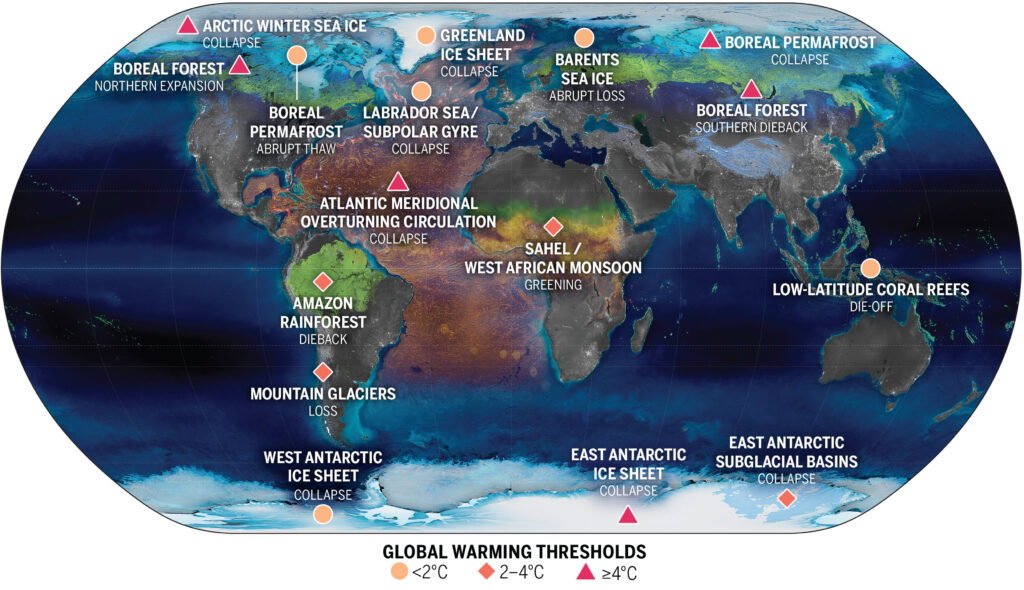The Earth’s climate is a complex and delicately balanced system, interwoven with intricate feedback loops that regulate temperature, weather patterns, and the overall equilibrium of our planet. However, human-induced activities have significantly disrupted this balance, leading to the emergence of what scientists refer to as “climate tipping points.” These critical thresholds represent irreversible changes within the climate system that, once crossed, could trigger abrupt and potentially catastrophic consequences for the environment, ecosystems, and human societies worldwide.
Understanding Climate Tipping Points: Climate tipping points signify critical thresholds within the Earth’s systems, beyond which irreversible and often cascading changes are triggered. These thresholds can exist in various forms, from the melting of polar ice caps and permafrost to disruptions in ocean currents and the loss of crucial ecosystems like coral reefs and rainforests.
Polar Ice Caps: The Arctic and Antarctic ice sheets play a pivotal role in regulating the planet’s temperature by reflecting solar radiation back into space. However, as temperatures rise, these ice caps are melting at an alarming rate. Once a certain threshold is surpassed, the melting can accelerate, leading to rising sea levels and altered weather patterns globally.
Permafrost Thaw: Frozen in the permafrost are vast amounts of methane and carbon dioxide, potent greenhouse gases. As the permafrost thaws due to increasing temperatures, these gases are released into the atmosphere, amplifying the greenhouse effect and further accelerating climate change.
Ocean Circulation: The ocean’s currents, such as the Gulf Stream, help regulate global climate by redistributing heat around the world. Disruptions in these currents due to factors like increased freshwater input from melting ice caps could lead to rapid and unforeseen shifts in weather patterns, affecting agriculture, fisheries, and coastal communities.
Ecosystem Collapse: Ecosystems like coral reefs, forests, and grasslands have their tipping points. When pushed beyond their limits through factors like deforestation, pollution, or temperature extremes, they can collapse, causing irreparable damage to biodiversity and essential ecological services.
The Urgency of Action: The scientific consensus is clear: we are perilously close to crossing some of these critical thresholds. While certain tipping points may have gradual effects, others could trigger rapid and unpredictable changes, creating a domino effect with widespread and severe consequences.
Urgent and collective action is imperative to mitigate these risks. Transitioning to renewable energy sources, preserving and restoring ecosystems, implementing sustainable land and ocean management practices, and reducing greenhouse gas emissions are crucial steps in preventing these tipping points from being breached.
Individual actions, coupled with global policy initiatives, hold the key to safeguarding our planet from catastrophic climate change. Through a combination of innovation, cooperation, and commitment, we can strive to stabilize our climate and protect the delicate balance that sustains life on Earth.
In essence, the concept of climate tipping points serves as a stark reminder of the urgency to act decisively and collaboratively. Our actions today will determine the fate of future generations, shaping the resilience and sustainability of our planet for years to come. The time to act is now, and our choices will determine whether we tip the scales towards a sustainable future or irreparable environmental damage.
Image courtesy of Journal of Science

Jeff is founder of Terra Vida Academy and has been actively involved in protecting nature for over 35 years.




